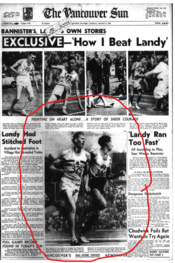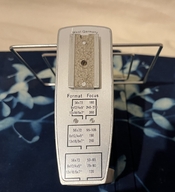Kids these days! 
Bannister and Landy on the final turn, during the "Miracle Mile" race at the 1954 Empire Games in Vancouver.

I got to print from what I believe was the original negative when a Vancouver Sun customer ordered a reprint.
Charlie Warner was the photographer. I believe he used a Speed Graphic. By the time I worked there (late 1970s), he was the manager of the department - my boss!
It was the first 4x5 negative I ever printed from .
.

Bannister and Landy on the final turn, during the "Miracle Mile" race at the 1954 Empire Games in Vancouver.
I got to print from what I believe was the original negative when a Vancouver Sun customer ordered a reprint.
Charlie Warner was the photographer. I believe he used a Speed Graphic. By the time I worked there (late 1970s), he was the manager of the department - my boss!
It was the first 4x5 negative I ever printed from
 .
.












